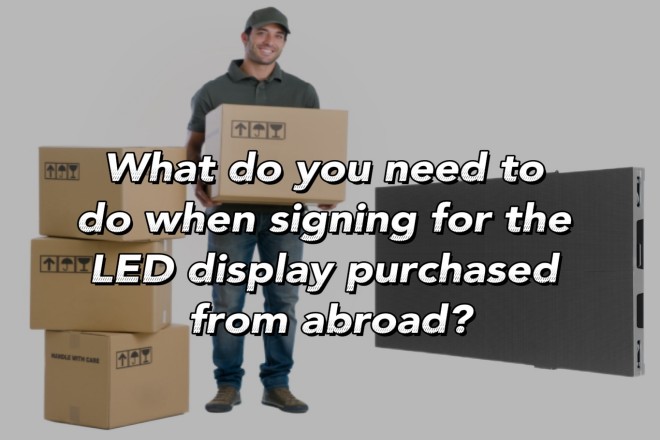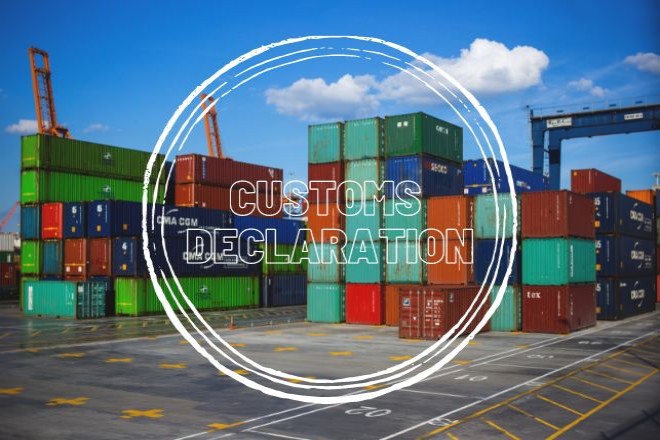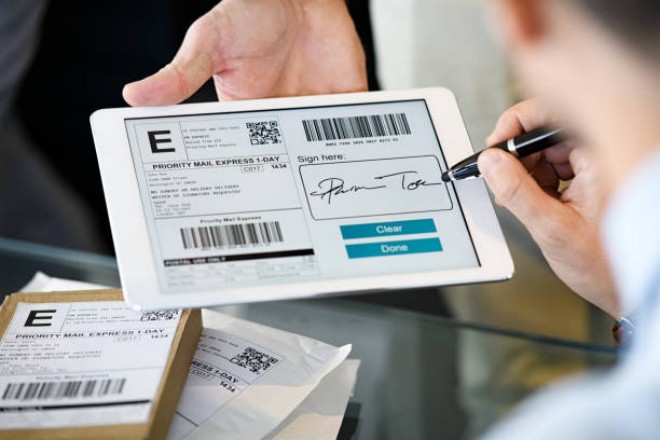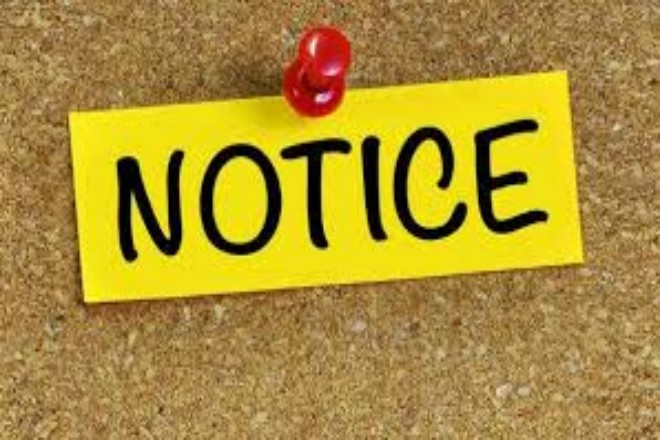Introduction

In today’s globalization, LED display screens, as an important information dissemination and display tool, have been used across borders and become an important bridge connecting different countries and regions. However, signing up for Écrans d'affichage LED purchased from abroad is not an easy task. It involves complex import processes, strict regulatory requirements, and detailed signing procedures.
This article aims to provide foreign customers with a detailed signing guide to help you successfully complete every link from ordering to signing and ensure that the LED display screen can arrive safely and legally and be put into use.
1. What preparations need to be made before signing?
Before signing for the LED display screen purchased from abroad, in order to ensure that everything goes smoothly, you need to make a series of meticulous and thoughtful preparations. The following steps will help you better understand and prepare for various matters before signing:
1). Carefully select suppliers and clarify the details of the goods
- Choosing reliable suppliers:
This is the basis of the entire transaction process. You need to screen out LED display screen suppliers with a good reputation and reliable product quality through market research, checking supplier qualifications, customer reviews, etc.
- Confirm the specifications and quantity of the goods:
Communicate with the supplier in detail to ensure that the specifications (such as resolution, size, brightness, etc.), model, quantity, and other information of the LED display you ordered are accurate. It is best to record this information in writing as part of the order.
2). Clarify the transaction terms and payment methods
Here, it is recommended to use a company account because the company account is more formal and authoritative. This is a guarantee for both you and the supplier.
Regarding the payment of purchase fees, you can discuss the proportion of payment with the supplier before signing the contract. For example, after signing the contract, you only need to pay a 30% deposit. When the LED display goods are produced and can be shipped, you can conduct online or offline inspections. After the product is approved by you, pay the remaining 70%.
Finally, you also need to ask the supplier clearly what methods are used to receive fees and choose the most convenient payment method for you. For example, BIBILED supports third-party transactions. In addition to bank transfers, you can use Alibaba and Alipay.
3). Collect and prepare necessary documents
- Bill of lading:
This is a certificate that proves that the goods belong to you. You can sign for it, but don’t worry, this certificate will be given to you by the supplier after the goods are shipped.
- Certificate of Origin:
This is an important document that proves the production location of the LED display, which helps the customs determine the tariff rate.
- Packing list and invoice:
The packing list lists the type, quantity, packaging and other information of the goods in detail, while the invoice is used to calculate the tariff. Both documents must be provided for customs clearance.
- Customs declaration letter and inspection letter:
If you do not have your own customs declaration and inspection capabilities, you need to entrust a professional customs declaration agent or logistics company to handle it on your behalf.
At this time, you need to prepare a customs declaration letter and an inspection letter to clearly authorize them to perform customs declaration and inspection operations on your behalf.
- Consignee filing information:
Some customs require consignees to file in advance. You need to confirm whether you need to provide a filing number and prepare relevant information.
After completing these preparations, you can welcome the arrival of the LED display with more confidence.
During the signing process, be sure to keep communication with suppliers, customs declaration agents and other parties open to ensure that all procedures and documents are complete and accurate.
At the same time, pay close attention to the dynamics of the goods during transportation so that possible problems can be dealt with in a timely manner.
2. LED display import customs declaration process

Importing LED displays is a complex but orderly process, and the customs declaration link is crucial. The following are the detailed steps of the LED display import customs declaration process to help you better understand and successfully complete the entire process:
Step 1: Select a customs declaration agent and prepare documents
1). Choose a professional customs declaration agent:
You need to find a customs declaration agent with rich import customs declaration experience and expertise. This company should be able to provide you with a full range of customs declaration services, including document preparation, customs declaration, tax payment, etc.
2). Prepare necessary documents and materials:
You need to provide a series of necessary documents and materials to the customs declaration agent, including but not limited to:
Certificate of origin: proves the place of production of the LED display.
Packing list: lists the type, quantity, packaging, and other information about the goods in detail.
Invoice: used to calculate tariffs.
Contract: a transaction contract between you and the supplier.
Proof of import and export rights: prove that the supplier has legal import and export qualifications.
3C certification or 3C exemption certificate (if applicable): According to relevant Chinese regulations, some imported electronic products need to obtain 3C certification or provide a 3C exemption certificate.
Customs declaration letter and inspection letter: authorize the customs declaration agent to perform customs declaration and inspection operations on your behalf.
Consignee registration information (if necessary): Some customs require consignees to register in advance.
Product information: including detailed information such as product name, quantity, packaging, weight, volume, etc.
Step 2: Wait for the arrival of the goods and handle the bill of lading
- Receive the arrival notice of the goods:
When the goods arrive at the domestic port or airport by sea or air, you will receive a notice of the arrival of the goods issued by the shipping company or airline.
- Handle the bill of lading procedure:
You need to use the bill of lading and other transport documents to handle the bill of lading at the agency designated by the shipping company or airline. After the bill of lading is changed, you will get a bill of lading or waybill, which is a necessary certificate for subsequent pickup.
Step 3: Inspection and customs declaration
- Submit the import customs declaration form:
According to the customs requirements, you need to fill out and submit the import customs declaration form.
The declaration form should list in detail the name, quantity, price, origin, and other information of the goods and be consistent with the documents and information provided.
- Cooperate with the customs to declare prices and inspect goods:
During the customs declaration process, you need to cooperate with the customs to declare prices. Please ensure that the price you provide is true and reasonable to avoid unnecessary trouble later.
At the same time, according to the customs inspection instructions, you may need to cooperate with the goods inspection.
During the inspection, the customs officers will check whether the quantity, quality, specifications, etc., of the goods are consistent with the declaration.
Step 4: Pay taxes and obtain tax payment certificates
- Calculate taxes:
According to the category, price, and customs tax rate regulations of the goods, you need to calculate the tariffs and import-related taxes payable. You can query and calculate through the customs official website or the customs declaration agent’s online platform.
- Pay taxes:
According to the requirements of the customs, you need to pay tariffs and import-related taxes through the designated payment method.
After paying taxes, the customs will issue the corresponding tax payment certificate. This is an important certificate for your subsequent pick-up and other procedures.
Step 5: Inspection and release of goods and pick-up of goods
- Inspection and approval of goods:
The customs will inspect and approve the goods according to the information on the declaration form and the documents and materials provided.
The inspection content includes but is not limited to whether the quantity, quality, specifications, etc., of the goods are consistent with the declaration.
- Passing the inspection and release procedures:
When the goods pass the inspection and approval of the customs, the customs will issue an inspection and release notice or a release order. This is a necessary certificate for you to pick up the goods.
- Picking up and delivering goods:
With the inspection and release notice or release order and the bill of lading or waybill, you can go to the warehouse at the port or airport to pick up the goods. After picking up the goods, you can arrange transportation to send the LED display to a designated location in the country.
During the entire import customs declaration process, please be sure to maintain close communication with the customs declaration agent, customs, and other departments.
If you encounter any problems or questions, please consult and seek help as soon as possible. At the same time, pay close attention to the dynamics of the goods during transportation and customs declaration so as to deal with possible problems in a timely manner.
3. What should I do in the signing and receiving link?

Signing for the LED display imported from abroad is a key link, which marks that the goods have officially completed the import process and are delivered to you.
The following are the detailed steps of the signing process, which are designed to help you complete the signing process smoothly:
1). Arrange the transportation of goods
- Determine the mode of transportation:
Choose the appropriate mode of transportation based on the quantity, size, weight, transportation time and cost of the goods. Ocean transportation is suitable for bulk goods, with lower costs but longer time.
Air transportation is faster but more expensive; land transportation is suitable for the transportation of goods in neighboring countries.
- Choose an insurance company for cargo insurance:
In order to ensure the safety of the goods, it is recommended to choose a reputable insurance company for cargo insurance before transportation. In this way, if the goods are damaged or lost during transportation, you can get corresponding compensation.
After the goods start to be transported, your supplier will give you a bill of lading. If it is a diligent supplier, there will not only be a bill of lading, but also an inspection list and inspection pictures and materials will be posted to you online.
2). The goods arrive at the destination country
- Receive the cargo arrival notice:
When the goods arrive at the destination country, you will receive a cargo arrival notice issued by the freight company or customs. Please pay attention to the cargo arrival time, unloading location, and documents required in the notice.
- Prepare necessary signing documents:
Before the arrival of the goods, you need to prepare all necessary signing documents, including but not limited to import licenses, customs declarations, tax payment certificates, bills of lading, etc. These documents will be used to handle the pick-up and signing procedures.
3). Goods inspection and receipt
- Goods inspection at the freight company or customs warehouse:
Before picking up the goods, you have the right to inspect them. Please contact the freight company or customs warehouse to arrange a time for the goods inspection.
During the inspection, please carefully check whether the quantity, specifications, models, and appearance of the goods are intact.
- Confirm that the goods are not damaged and that the specifications and models are correct:
During the inspection process, if the goods are found to be damaged or the specifications and models do not match the order, please contact the freight company or supplier immediately and keep the relevant evidence for subsequent processing.
If the goods are intact and the specifications and models are correct, you can continue to go through the receipt procedures.
- Sign for the goods and keep the receipt:
After confirming that the goods are correct, you can formally sign for the goods. Please be sure to sign the receipt and keep a copy as a voucher.
The receipt is an important document to prove that you have received the goods. If there are any disputes or problems later, it will be your important evidence.
During the entire receipt process, please be sure to keep communication with the freight company, customs and suppliers. If you encounter any problems or questions, please consult and seek help in a timely manner.
At the same time, it is also necessary to ensure that all documents are complete and accurate so that the pick-up and signing procedures can be handled smoothly.
4. What should be done next?
1). Unloading and proper storage
1.1). Detailed unloading steps:
Appointment of professional team: Before the expected arrival date of the goods, make an appointment with a professional team with rich unloading experience in advance.
Make sure they understand the characteristics of the goods (such as weight, size, fragility, etc.) and prepare the corresponding unloading tools and equipment.
On-site supervision: During the unloading process, arrange a dedicated person to supervise on-site. Ensure that the unloading process is smooth and orderly to avoid any possible collision or fall.
Safety inspection: After unloading, a preliminary safety inspection of the goods must be immediately conducted. Confirm whether the packaging is intact and whether the goods are obviously damaged or deformed.
1.2). Storage precautions:
Choose a suitable warehouse: Choose a dry, ventilated, moisture-proof, and dust-proof warehouse for storage. Avoid sharp objects or heavy objects in the warehouse to avoid oppression or scratches on the LED display.
Reasonable placement: Arrange the warehouse space reasonably according to the size and weight of the goods. Ensure that the goods are stacked firmly to avoid tipping or sliding.
Regular inspection: Regularly inspect the stored LED display screens to ensure that the goods are not affected by environmental factors (such as moisture, mildew, etc.).
2). Professional installation and meticulous debugging
2.1). Detailed installation steps:
Choose a professional team: Choose a professional team with experience in LED display installation for installation. Make sure they understand the characteristics and installation requirements of the product.
Site preparation: Before installation, make sure that the installation site has been cleaned and there are no obstacles. Prepare the required installation tools and materials.
Safe installation: During the installation process, strictly abide by the safety operating procedures. Make sure that the installers wear safety protection equipment to avoid accidents.
2.2). Detailed debugging steps:
System connection: According to the product manual, correctly connect the power cord, signal cord, etc. of the LED display screen. Ensure that the connection is firm and stable.
Preliminary debugging: Start the system and perform preliminary debugging. Check whether the display effect, brightness, contrast, and other parameters of the display screen meet the requirements.
Fine adjustment: According to the results of the preliminary debugging, make fine adjustments. Ensure that the color and clarity of the display screen are in the best state.
5. Things to note

When importing LED display screens, there are several key points that need special attention to ensure that the whole process goes smoothly:
1). Packaging should be safe
Remind suppliers: Make sure that the packaging of LED display screens is safe and strong and can withstand collisions and squeezing during long-distance transportation.
Clear labeling: There should be obvious signs such as “fragile”, “do not put upside down”, “heavy pressure danger” on the outer packaging to remind transportation personnel to handle it carefully.
2). Buy insurance, just in case
Freight insurance: Buy freight insurance for LED display screens to get financial compensation in case of damage during transportation.
Timely claim: If the goods are really damaged, contact the insurance company immediately and provide the necessary supporting materials for a claim.
3). Comply with laws and regulations
Legal procedures: Make sure that all import procedures are legal and compliant, including applying for import licenses, customs declarations, paying taxes, etc.
Understand regulations: Before importing, study the relevant import laws and tax policies of the destination country in detail to ensure that the import activities meet local requirements.
4). Other tips:
Choose the right freight company: Find a reputable and experienced freight company to transport LED display screens that are more reliable.
Follow up on transportation: Communicate with the freight company regularly to understand the progress of the goods and ensure that the goods arrive on time.
Keep documents: All documents and files generated during the import process should be properly preserved for subsequent needs.
Following these precautions can help you import LED displays more smoothly and safely.
Conclusion
In summary, signing for LED displays purchased abroad is a complex process involving multiple links and multi-party collaboration. Through the introduction of this article, we hope to provide foreign customers with a comprehensive and practical signing guide to help them better understand and deal with various challenges in the import process.
During the signing process, be sure to maintain close communication with suppliers, customs brokers, freight companies, and other parties to ensure the accuracy and timeliness of information.
At the same time, always pay attention to the import regulations and tax policies of the destination country to ensure the legality and compliance of the entire import process.
Enfin, si vous souhaitez en savoir plus sur les écrans LED, veuillez nous contacter.
